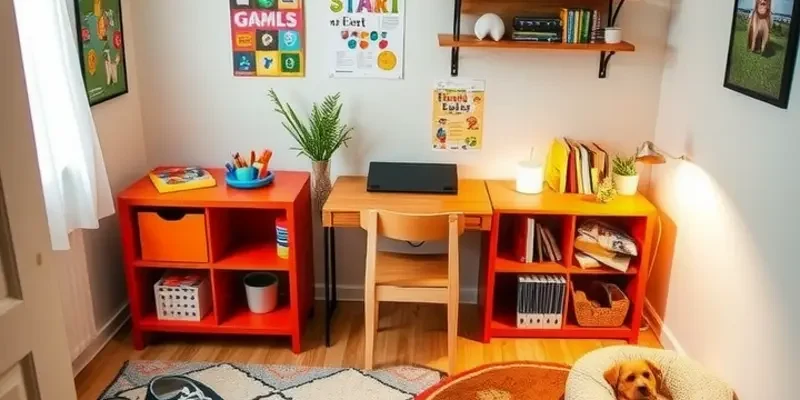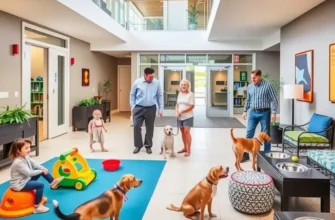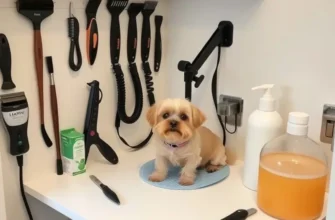Finding the right apartment for homeschooling can feel daunting, especially when balancing the needs of children and pets within a confined space. However, with careful planning and organization, you can create a nurturing, effective learning environment at home. Apartments can offer just the right mix of comfort and safety, making them ideal for families and renters eager to embrace homeschooling. This journey requires some creativity, resourcefulness, and a pinch of patience. From selecting the best layout to implementing child- and pet-friendly furnishings, every step you take contributes to a productive homeschooling experience. Whether you’re a couple, a dedicated pet owner, or a family seeking a safe space for education, creating this haven is possible with thoughtful strategies tailored to your apartment’s size and layout. By the end of this exploration, you’ll be equipped with practical tips to foster a comforting and stimulating learning atmosphere right at home.
Designing Functional Learning Zones

Creating dedicated learning zones within an apartment involves more than just carving out a corner. It’s about crafting an environment that fosters both concentration and creativity, accommodating the dynamic needs of children and the comforting presence of pets.
Begin by assessing your apartment layout to identify potential learning areas. Consider spaces with ample natural light as they can invigorate a learning setup. If windows are limited, position desks near light sources to ensure a bright workspace. For smaller apartments, utilize multifunctional furniture such as foldable desks or tables that can double as dining areas.
When choosing furniture, prioritize comfort and durability. Opt for chairs with good back support, especially for longer study periods. In shared spaces, select tables with rounded edges to minimize injury risks for kids and pets. If space permits, incorporate modular shelving units that serve as both storage and dividers, enhancing organizational efficiency while creating a distinct learning zone.
Material choice is crucial in crafting a pet-friendly yet learning-conducive environment. Use wipeable surfaces for desks and tables to manage spills or pet hair easily. Consider rugs or floor mats made from pet-resistant materials, ensuring that the ground remains a cozy space for sitting or reclining during story time or collaborative projects.
The arrangement of these items can significantly impact how children engage with their learning zone. Educators often endorse having spaces where students can freely express themselves, like art corners or reading nooks. A dedicated wall for pinboards or whiteboards can stimulate ideas and facilitate tracking progress or showcasing creative work. Combining these tools with storage baskets can aid in maintaining an organized space, as discussed in this guide to apartment organization with baskets.
Remember, flexibility is key. Children’s interests and needs evolve, and their learning environment should adapt accordingly. Consider mobile setups with furniture on wheels or lightweight materials that are easy to move. This adaptability encourages kids to take ownership of their learning space while keeping the environment fresh and stimulating.
Also vital is creating a pet-friendly study zone. Pets can have a calming presence that helps children focus. Ensure pets have comfortable spots within the learning area, using pet beds or cushions nearby. This integration helps reduce distractions as pets feel included, preventing them from seeking attention elsewhere.
Ultimately, every element of the learning zone should contribute to a space that is not only functional but also inviting. This balance of practicality and warmth will immerse children in an environment that supports both educational pursuits and the familial bond—where pets play an integral role. Together, these spaces transform the apartment into a nurturing homeschool haven.
Organizing Homeschool Supplies Efficiently

Creating a homeschooling haven in your apartment requires efficient organization of supplies. Small spaces can become cluttered easily, but with thoughtful planning, everything can be at your fingertips while remaining neat and tidy. Organizing homeschool supplies efficiently involves utilizing diverse storage solutions, incorporating child-friendly options, and keeping pets in mind.
First, consider using multi-purpose furniture for storage. For example, a bench with storage capacity underneath can keep art supplies and educational games hidden away yet accessible. Shelves with adjustable heights provide flexibility for various sized materials, promoting easy classification.
Labeling is essential. Use clear, consistent labels on all storage containers. For an interactive approach, involve your children in the labeling process. This can enhance their understanding of the organization and make it easier for them to locate and return items. Consider labeling with images and words for younger children. This visual aid supports literacy while maintaining organization.
In terms of storage options, ensure that they are child-friendly. Opt for lightweight bins with no sharp edges. Transparent containers can be beneficial as they allow for quick identification of contents. However, make sure they are stored securely to prevent access by curious pets.
Establishing a routine is another strategy to maintain order. Implement a system where supplies are returned to their designated spot at the end of each day. This not only fosters responsibility among children but also prevents chaos from building.
To manage paper clutter, file cabinets or portable filing boxes come in handy. Assign each child a drawer or section for their assignments. Periodically review these files to dispose of or digitize unnecessary papers, thus saving space.
For book storage, staggered bookcases or wall-mounted shelves are efficient. They offer vertical storage and can be positioned above the child’s reaching height, safeguarding against accidental damage by pets.
Safety for both children and pets is paramount. Every item should be stored at appropriate heights, ensuring heavy supplies are not within children’s reach. Similarly, hazardous materials like glue or scissors should be stored in childproof containers.
Involving children in these processes can be as simple as asking for their preferences on where items are stored. This can create a sense of ownership and interest in maintaining the organization.
Lastly, for tips on using baskets to enhance apartment organization effectively, check out this guide on apartment organization baskets. It offers creative solutions that can be adapted for homeschool use, helping maintain a more structured and inviting learning environment.
Implementing these strategies will transform your apartment into a well-organized homeschooling haven, fostering both learning and family harmony.
Final words
Creating a homeschooling environment in an apartment is not only achievable but can also be enjoyable. By designing functional learning zones and organizing supplies effectively, you can craft a space that inspires creativity and concentration for children, while ensuring the safety and comfort of pets. Embrace the opportunities your apartment provides, and remember that flexibility and adaptability are key in creating a nurturing learning atmosphere. As you embark on this journey, appreciate the special moments of learning with your loved ones, knowing that every effort you put into this space helps shape your children’s educational experiences beautifully.









